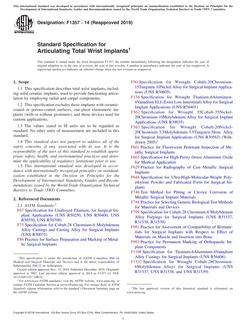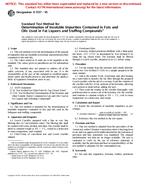1.1 This practice covers a protocol for evaluating the compatibility of one or three binary mixtures of lubricating greases by comparing their properties or performance relative to those of the neat greases comprising the mixture.
1.2 Three properties are evaluated in a primary testing protocol using standard test methods: (1) dropping point by Test Method D 566 (or Test Method D 2265); (2) shear stability by Test Methods D 217, 100 000-stroke worked penetration; and (3) storage stability at elevated-temperature by change in 60-stroke penetration (Test Method D 217). For compatible mixtures (those passing all primary testing), a secondary (nonmandatory) testing scheme is suggested when circumstances indicate the need for additional testing.
1.3 Sequential or concurrent testing is continued until the first failure. If any mixture fails any of the primary tests, the greases are incompatible. If all mixtures pass the three primary tests, the greases are considered compatible.
1.4 This practice applies only to lubricating greases having characteristics suitable for evaluation by the suggested test methods. If the scope of a specific test method limits testing to those greases within a specified range of properties, greases outside that range cannot be tested for compatibility by that test method. An exception to this would be when the tested property of the neat, constituent greases is within the specified range, but the tested property of a mixture is outside the range because of incompatibility.
1.5 This practice does not purport to cover all test methods that could be employed.
1.6 This standard does not purport to address all the safety concerns, if any, associated with its use. It is the responsibility of the user of this standard to establish appropriate safety and practices and determine the applicability of regulatory limitations prior to use. For specific safety information, see 7.2.3.
Product Details
- Published:
- 01/01/2002
- Number of Pages:
- 8
- File Size:
- 1 file , 110 KB


